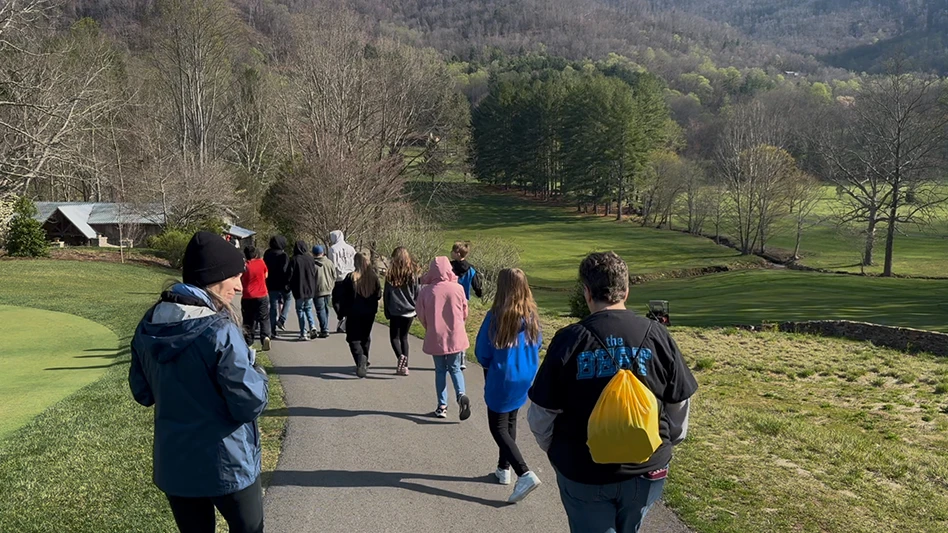
Like a diamond in the rough, every so often something comes around that just needs a little polishing before it meets its true potential. This could aptly describe POLYON fertilizer, the golf industry’s most popular controlled-release fertilizer.
According to David Pursell, former CEO of Pursell Technologies and current Chief Executive Officer of Pursell Farms, his team found out about the undeveloped technology that eventually became POLYON in the late 1980s.
“Pursell Technologies was a relatively small, family-owned fertilizer company, but we were very opportunistic,” Pursell says. “It was someone else’s idea and they patented it. We had to perfect it.”
In short order, production went from a tabletop unit, to a small plant, and beyond.
“We invested a lot of money and a lot of time,” Pursell says. “But it turned into a great technology ... Became a very useable and safe product.”
Considering Pursell’s expertise was in marketing, he began brainstorming ways to make their new product relevant nationally and internationally. With that in mind, they built the world’s first research-and-demonstration golf course – FarmLinks, located in Sylacauga, Ala.
“We had a very good product and the industry’s most talented team, and the most unique way to showcase it,” he says.
Mark Langner, CGCS, Director of Business Development for Aqua Aid, was the longtime Director of Agronomy at FarmLinks. “Consistency was missing with fertilizer prior to POLYON,” he says.
“The biggest issue was having a fertilizer that we could apply with confidence ... that the longevity and consistency of the fertilizer would meet the needs of our premium turf conditioning,” Langner says. “POLYON gave us the ability to make a single-season application without flushes in growth and that would maintain color through our growing season. Consistent nutrient release that was predictable and only needed water and temp to activate the release.”
Langner knew how great the POLYON technology was, but saw the industry needed education and information to really understand the product.
“By bringing people to FarmLinks, they not only received the information but got to see the technology in real-life situations,” Langner says. “The other key component to having groups in was developing a relationship and trust between the customers and Pursell Technologies. They got to see the manufacturing process and the commitment to quality.
“The attendees became part of the Pursell Technologies family,” Langner adds. “They received great information and education from many of the industry leaders and manufacturers. The opportunity to visit with others from their geography and learn how they were finding success was an unmeasurable benefit. FarmLinks was a private country club built for turf managers and they were the members.”
Referring to FarmLinks as “a living laboratory to demonstrate product,” Pursell would show visiting superintendents how safe POLYON was for their course. As an exhibition, Langner once put eight times the label rate to demonstrate.

“Really greened it up, but didn’t burn the turf,” he says.
So POLYON was proven safer and more efficient than other fertilizers on the market.
“It was a no-waste fertilizer,” Pursell says. “You’d get 100 percent of it as opposed to possibly losing 50 percent right away.”
“You could now meter out nutrients over a period of time,” he added. “The thickness of the coating dictated timing ... Thicker the coating, the longer it took to release. It could rain on POLYON and it wouldn’t release any quicker.”
Robert Mitchell, the current FarmLinks’ superintendent, has used many other products alongside POLYON and has a breadth of comparative knowledge. He makes no secret of his affection toward – and appreciation of – the product.
“I love it,” Mitchell said. “I love the ability to know what my release curve should be and when I can expect the product to teeter out. It allows me to plan my fertilizer applications for the fall to prevent the turf from going so far off color.”
It’s also nice to know that the evolution of POLYON has been consistent and the turf continues to thrive. But the turf at FarmLinks isn’t the only feature benefiting from POLYON.
Mitchell is a POLYON fan. “[It’s a] great product that continues to prove itself years after its initial release to the market.”
For Langner, recommending POLYON to golf course superintendents is a no brainer. “Utilizing the technology will allow them to control the nutrients provided without anything more than making the application as prescribed by their POLYON reps,” he says.
Pursell sold the technology in 2006 and it is currently manufactured by Koch Turf & Ornamental. He remains impressed with POLYON’s performance and sees a bright future for the product. “Still the best technology out there,” he says. “Whatever plateau you’re at with any product, there are always new things coming out, but there’s nothing out there that’s better than POLYON.”
As for the future, Pursell envisions thinner coatings, lowering the cost, and maybe tightening release curves.
“Superintendents can’t have lapses in quality,” Pursell says. “They need a product that has consistent performance, a product they can trust. This fertilizer made them look better as a superintendent.”

Explore the May 2017 Issue
Check out more from this issue and find your next story to read.
Latest from Golf Course Industry
- From the publisher’s pen: Watery dilemma
- The Aquatrols Company hires marketing manager
- Renovating Bredemus in West Texas
- Renovation starts at Okatie Creek GC at Sun City Hilton Head
- The Fittest Podcast in Turf: Episode 1
- New 6-hole course debuts in Oklahoma
- GCSAA announces Grassroots Ambassador Leadership Award recipients
- Reel Turf Techs: David Gummo





